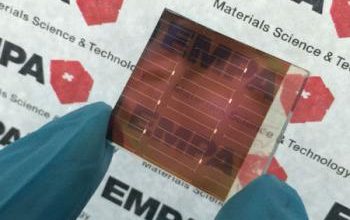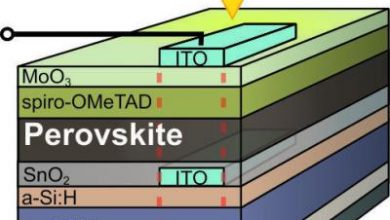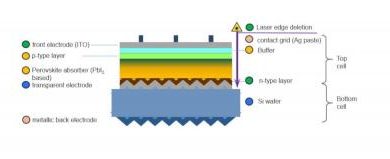Scientists tackle heat loss problem by deploying hot-carrier technology in perovskite solar cells
Researchers at the National Renewable Energy Laboratory (NREL) announced that they have figured out a pathway for dealing with the heat loss problem by deploying hot-carrier technology in perovskite solar cells. Hot carrier solar cells offer simplicity of design, low cost, and high efficiency, but are a long way from being commercialized, as one big challenge is revving up the kinetic energy transfer in order to prevent energy loss. This recent study provides a pathway for pushing perovskite levels upwards, possibly as high as 66%. It determines that charge carriers created by absorbing sunlight by the perovskite cells encounter a bottleneck where phonons (heat carrying particles) that are emitted while the charge carriers cool cannot decay quickly enough. Instead, the phonons re-heat the charge carriers, thereby drastically slowing the cooling…
Florida State researchers have developed a cheaper, more efficient LED, or light-emitting diode, using perovskites.
The researchers spent months using synthetic chemistry to fine-tune the materials in the lab, creating a perovskite material capable of emitting a staggering 10,000 candelas per square meter when powered by 12 volts. The scientists say that such exceptional brightness owes, to a large extent, to the inherent high luminescent efficiency of this surface-treated, highly crystalline nanomaterial.
The perovskite material is easily and quickly made, which the researchers hope will translate to cheap, scalable production. LEDs are more efficient than other lighting sources, but adoption in the home has been slow-going due to their relative expense.
upiAdvanced MaterialsPerovskite applicationsLEDTechnical / research
sounds impressive but doesn’t relate to the normal measure of led efficiency ie lumens per watt ,currently between 50 to 80 . and pretty much all new houses are getting leds now, at $ 20 to $40 per fitting they make sense . cheers MG
Above are Perovskites may enable cheaper, more efficient LEDs web publication,Hope can help you.
Perovskites enable quantum dots for displays, lasers and solar cells
Scientists at Nanjing University of Science and Technology, China, and colleagues have used quantum dots based on perovskites for QD-based light-emitting devices (QLEDs). These (completely inorganic) materials reportedly solve the stability problem of previously developed hybrid organicé¥ænorganic halide perovskites. Quantum dots (QDs) are nanometer-sized semiconductor materials with highly tunable properties such as bandgap, emission color, and absorption spectrum. These characteristics depend on their size and shape, which can be controlled during the synthesis. The quantum dots’ luminescence wavelength can be tuned by both their size and by the halide ratio. In this research, the team made blue, green, and yellow QLEDs with high quantum yields, using the perovskite quantum dots as the emitting layer. The researchers state that this development could allow the design of new optoelectronic devices, such as…



